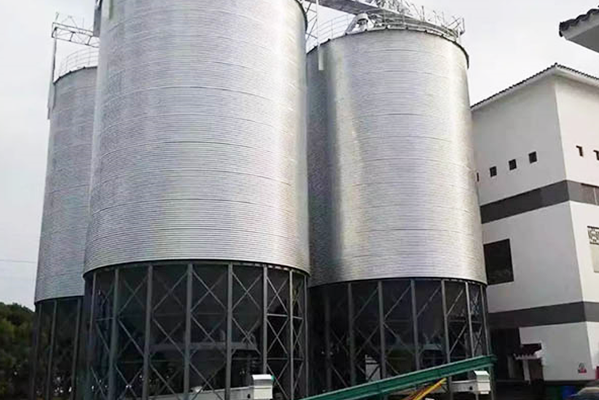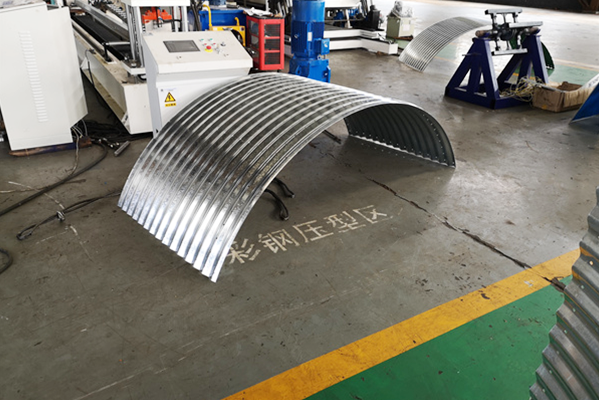Navigation Menu
Contact Us
- Email:
- info@wxavatar.com
- Address:
- Yurong Village, Yuqi Street, Huishan District, Wuxi, China.
Release Date:Mar 15, 2025 Visit:55 Source:Roll Forming Machine Factory
Storing food, particularly grains, is a fundamental practice in agriculture that ensures food security and minimizes post-harvest losses. For large-scale operations, the choice of storage solutions is critical to maintaining the quality and quantity of grains over extended periods. With the global demand for food continuously rising, efficient and reliable grain storage systems have become indispensable. Among the various options available, certain methods and structures stand out for their ability to handle large volumes of grains effectively. This article explores the primary solutions used for storing grains on a large scale and their significance in modern agriculture.
Large-Scale Grain Storage Solutions
1.Silos
Silos are the most iconic and widely used structures for large-scale grain storage. These tall, cylindrical containers, typically made of steel or concrete, are designed to store bulk grains safely and efficiently. Silos provide airtight environments that protect grains from moisture, pests, and temperature fluctuations. They are often equipped with advanced features such as temperature monitoring systems, aeration mechanisms, and automated unloading systems, making them ideal for commercial grain storage facilities and large farms.

2.Grain Bins
Grain bins, also known as grain elevators, are another popular choice for large-scale grain storage. These structures are usually constructed from corrugated steel and come in various sizes to accommodate different storage needs. Grain bins are designed with features like ventilation systems and moisture control to ensure the longevity of stored grains. They are commonly used in farming operations and grain processing plants, offering a balance between capacity and cost-effectiveness.
3.Flat Storage Facilities
Flat storage structures, such as warehouses or sheds, provide expansive spaces for bulk grain storage. These facilities are versatile and can store large quantities of grains, making them suitable for regions with high agricultural output. However, flat storage requires additional measures, such as proper ventilation, pest control, and moisture management, to maintain grain quality. Despite these challenges, flat storage remains a practical solution for large-scale operations.
4.Bunkers and Dome Storage
Bunkers and dome storage systems are innovative solutions for large-scale grain storage. Bunkers are typically constructed by piling grains on the ground and covering them with tarps or other protective materials. Dome storage, on the other hand, involves building large, dome-shaped structures to house grains. Both methods are cost-effective and can handle massive volumes of grains, making them suitable for temporary or emergency storage needs.
Key Features of Large-Scale Grain Storage Systems
Capacity: Designed to store thousands of tons of grains.
Durability: Built to withstand environmental factors and long-term use.
Protection: Equipped with systems to control moisture, pests, and temperature.
Automation: Integrated with technology for efficient monitoring and management.
Scalability: Adaptable to varying storage needs and operational scales.
The Role of Technology in Large-Scale Grain Storage
Modern large-scale grain storage systems are increasingly incorporating technology to enhance efficiency and reliability. IoT-enabled sensors, for example, allow real-time monitoring of grain conditions, enabling timely interventions to prevent spoilage. Automated loading and unloading systems reduce labor costs and minimize grain damage during handling. Additionally, climate-controlled storage facilities use advanced technology to regulate temperature and humidity, ensuring optimal storage conditions even in challenging environments.

Storing Food: A Pillar of Global Food Security
In conclusion, storing food, particularly grains, on a large scale is essential for ensuring food security and reducing post-harvest losses. Solutions such as silos, grain bins, flat storage facilities, and bunkers provide the capacity and protection needed to preserve grains effectively. As technology continues to advance, these storage systems are becoming more efficient, reliable, and adaptable to the growing demands of global agriculture. By investing in large-scale grain storage solutions, we can safeguard our food supply, support sustainable agriculture, and contribute to a hunger-free world. Storing food is not just a practice—it is a commitment to the future of food security.